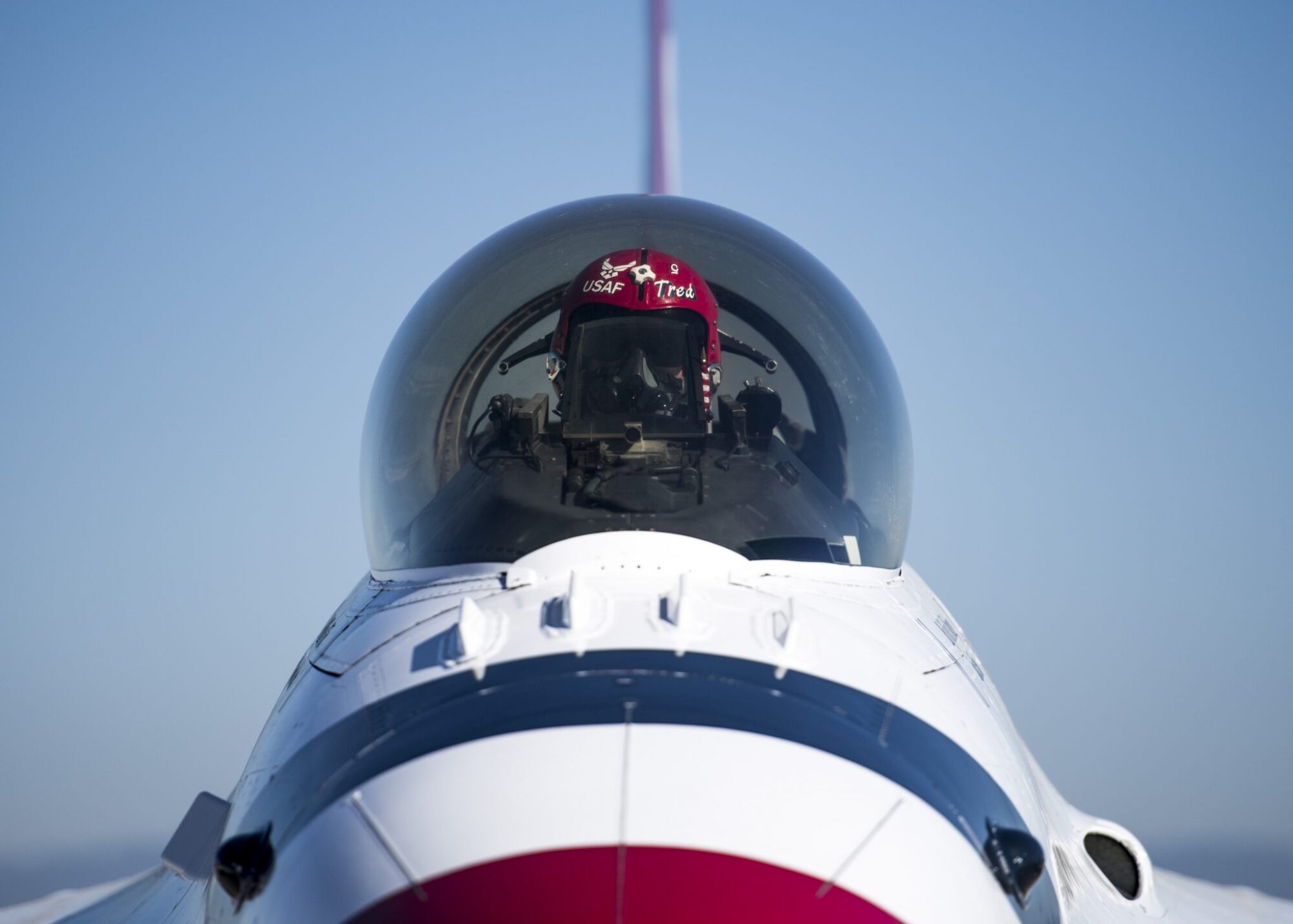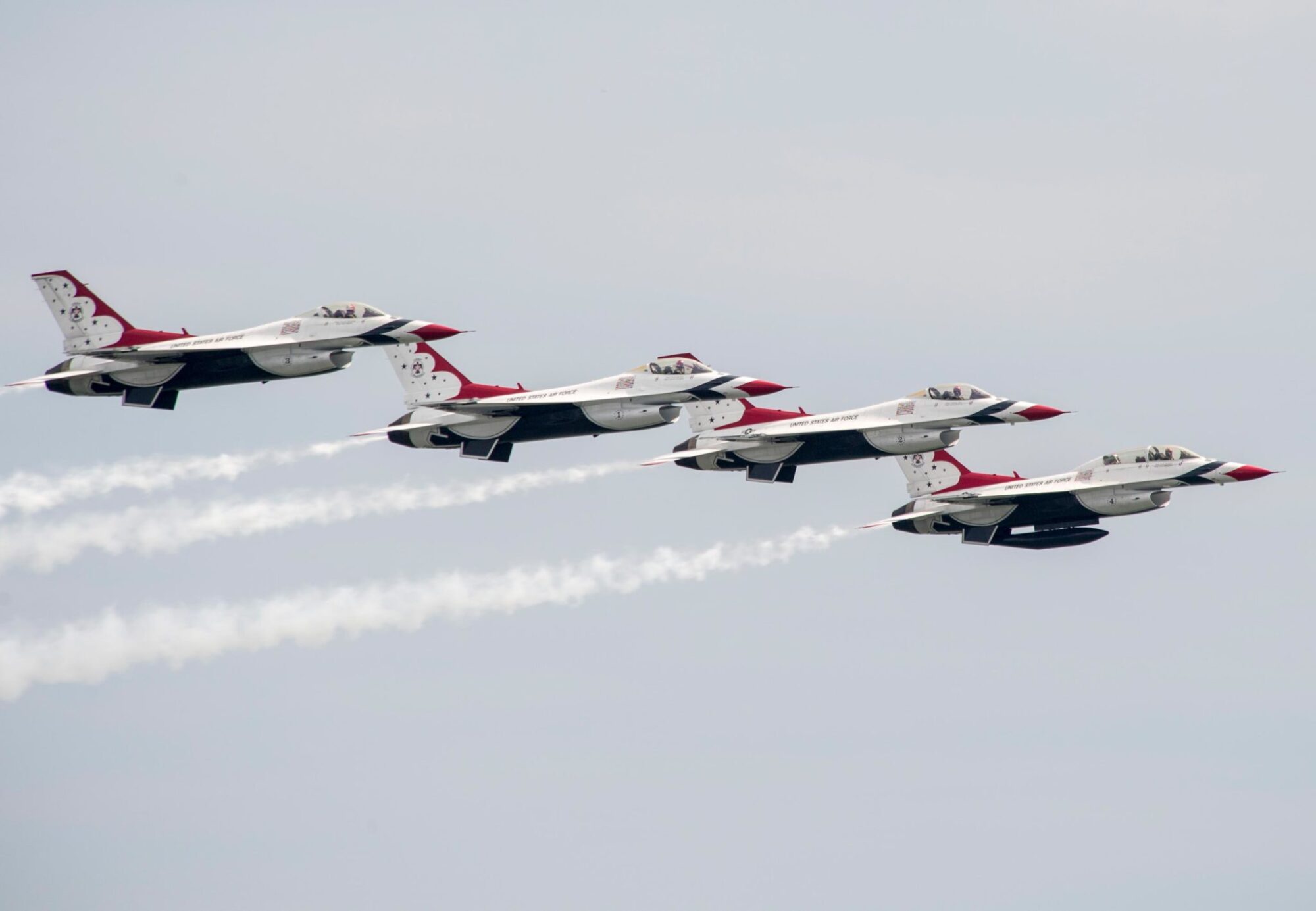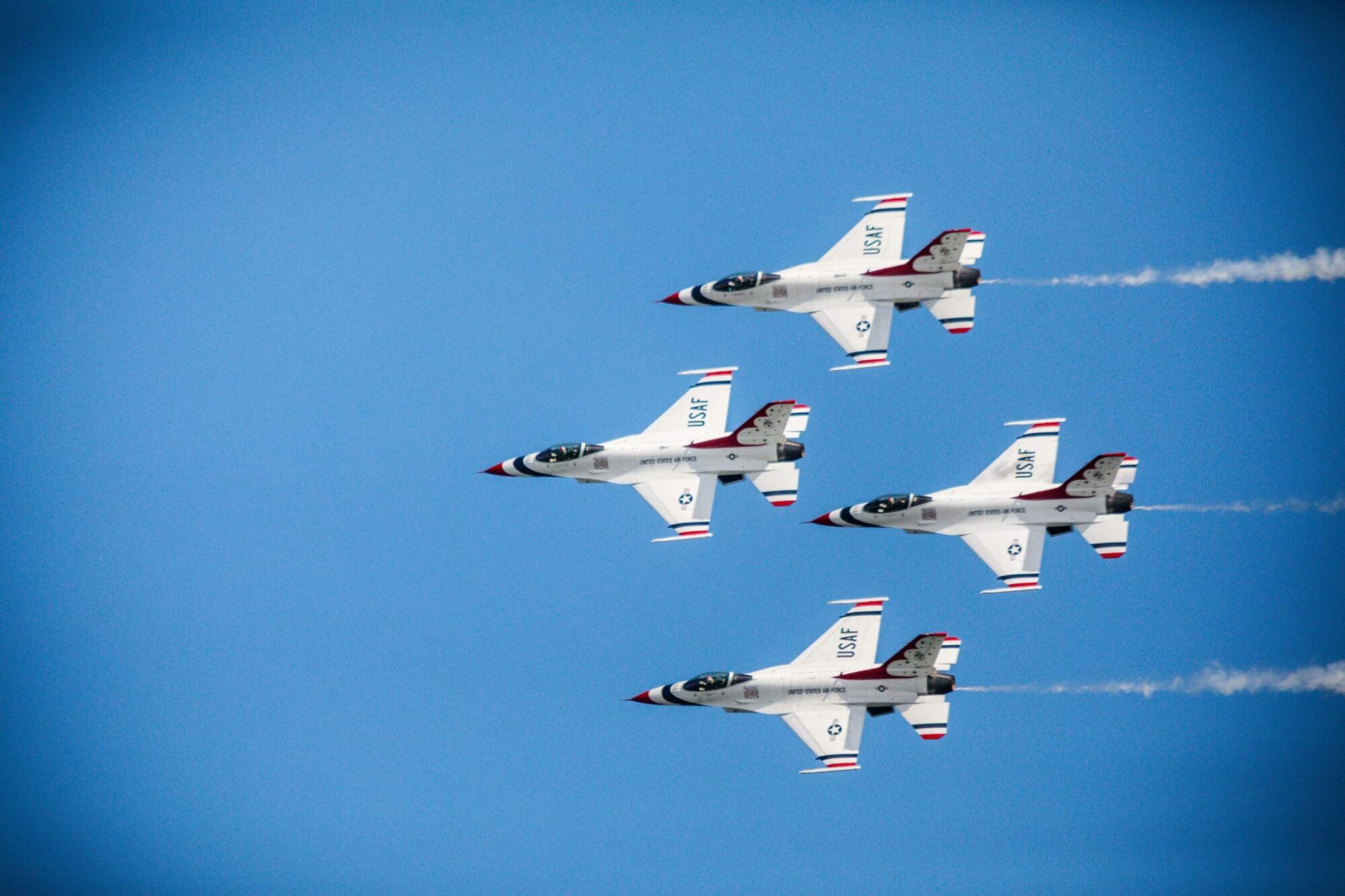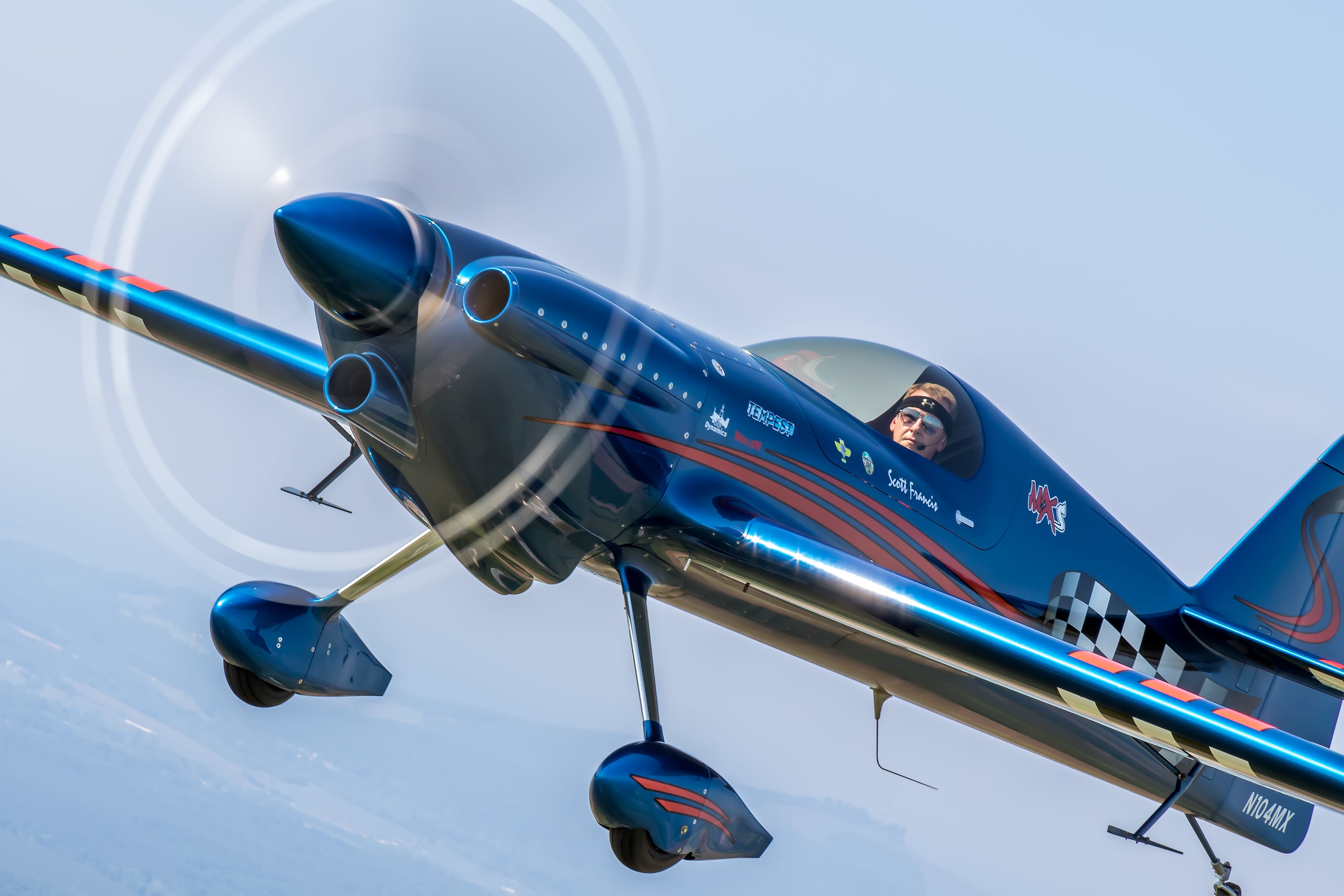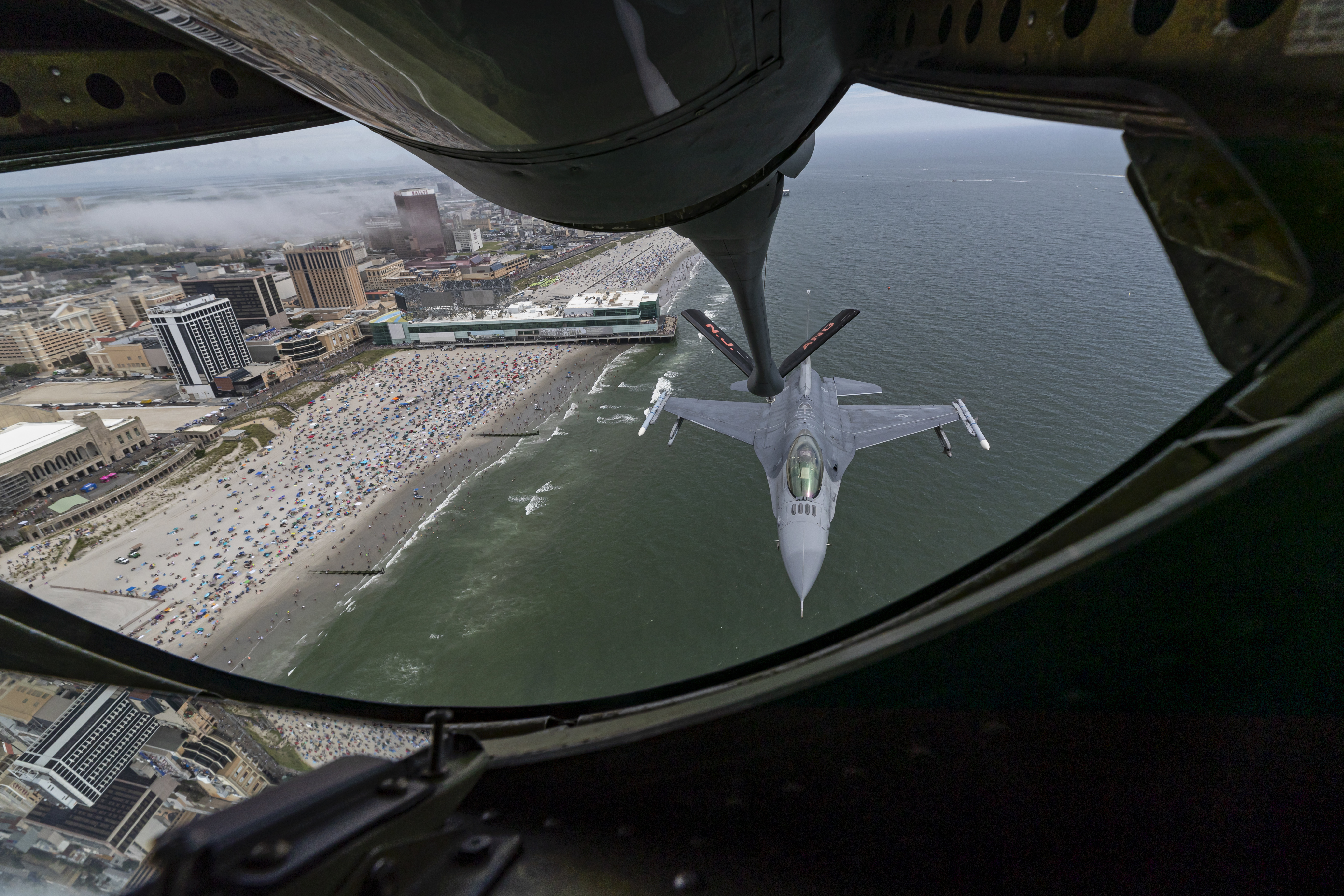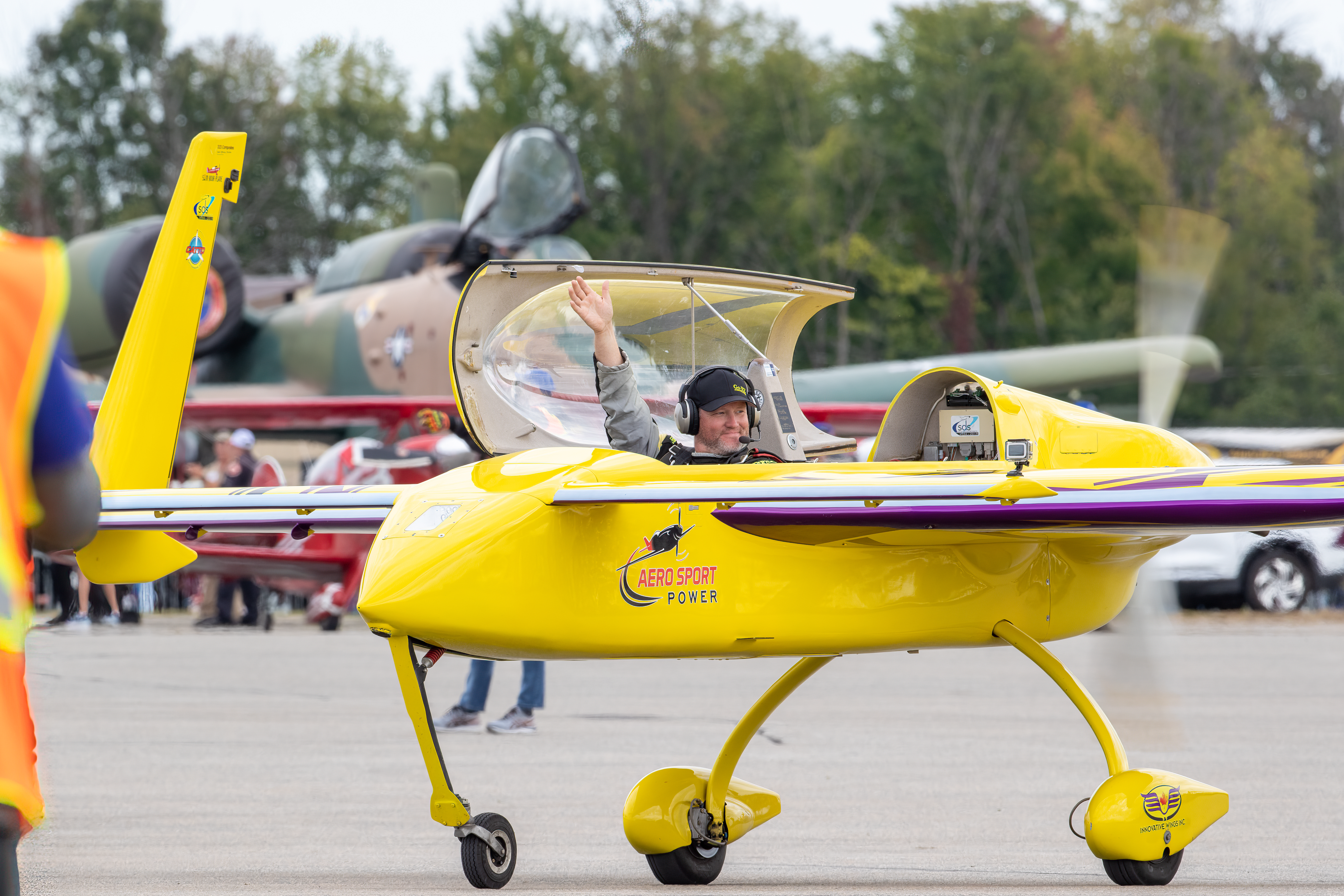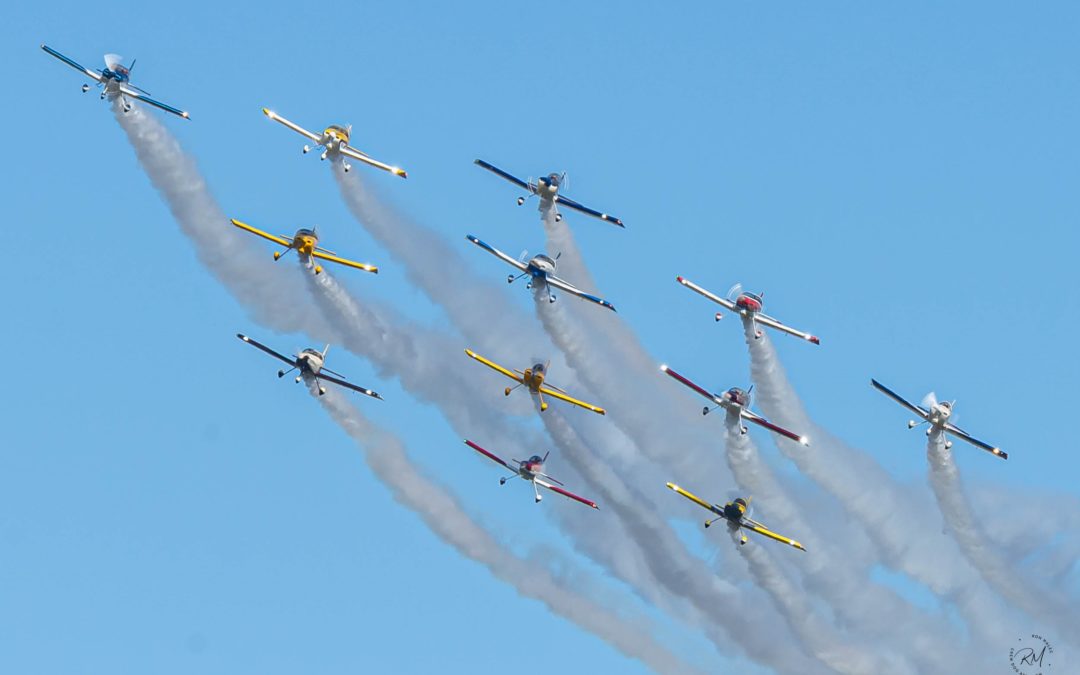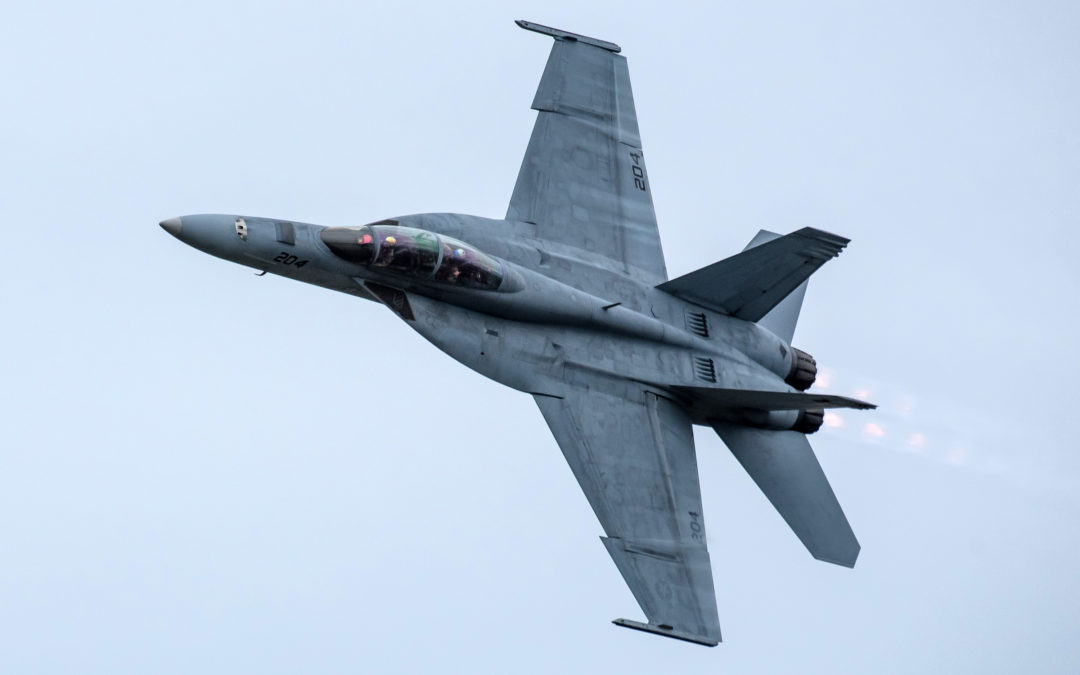U.S.A.F Thunderbirds
Mission
Officially, the Thunderbirds are known as the U.S. Air Force Air Demonstration Squadron. The squadron’s mission is to plan and present precision aerial maneuvers to exhibit the capabilities of modern, high-performance aircraft and the high degree of professional skill required to operate those aircraft.
The Team
The Thunderbirds squadron is an Air Combat Command unit composed of eight pilots (including six demonstration pilots), four support officers, four civilians and more than 100 enlisted personnel performing in almost 30 job specialties. A Thunderbirds air demonstration is a mix of formation flying and solo routines. The four-jet diamond formation demonstrates the training and precision of Air Force pilots, while the lead and opposing solo aircraft highlight some of the maximum capabilities of the F-16 Fighting Falcon.
F-16 Fighting Falcon
The Lockheed Martin F-16 Fighting Falcon represents the full range of capabilities possessed by the Air Force’s tactical fighters. This highly-maneuverable multi-role fighter has proved to be one of the world’s best precision tactical bombers and air-to-air combat aircraft. The only modifications needed to prepare aircraft for air demonstrations are a smoke-generating system and painting in Thunderbird colors. Additional information about the F-16 can be found here.
History
The Thunderbirds were officially activated June 1, 1953, as the 3600th Air Demonstration Unit at Luke AFB, Ariz. The unit was nicknamed the “Stardusters.” Their first aircraft was the straight-winged F-84G Thunderjet, a combat fighter-bomber that had seen action in Korea. Early in 1955, the team transitioned to the swept-winged F-84F Thunderstreak.
In June 1956, the team moved to its current home at Nellis. At the same time the Thunderbirds traded the veteran F-84 for the world’s first supersonic fighter, the F-100 Super Sabre — an aerial platform that would serve the Thunderbirds for 13 years. More than 1,000 demonstrations were flown in the Super Sabre, thrilling spectators around the world. In 1964, the team changed briefly to the F-105B Thunderchief, but an in-flight mishap revealed a problem with that airframe’s design. So, after only six shows, the Thunderbirds returned to the F-100.
From 1969 to 1973, the Thunderbirds flew the Air Force’s front-line fighter, the F-4E Phantom II. In 1974, the Thunderbirds converted to the T-38 Talon, the world’s first supersonic trainer. The T-38 was more fuel-efficient and less costly to maintain, which made it an ideal choice during the oil crisis of the 1970s.
Early in 1983, the Thunderbirds reinstituted their traditional role of demonstrating the Air Force’s front-line fighter capabilities. Transition to the F-16A allowed the team to retain manpower and fuel efficiency while demonstrating to spectators the latest in fighter technology.


